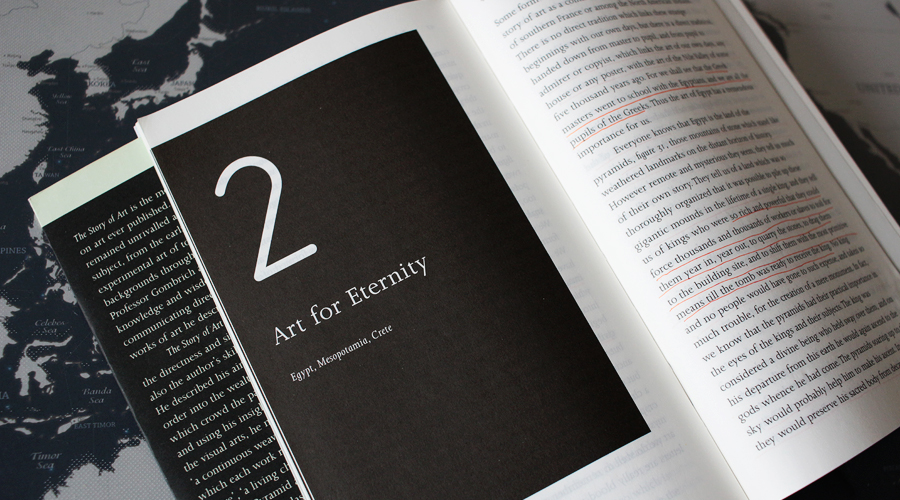
Ancient Egypt has always been one of the more fascinating parts of history for me. I loved the book The Egypt Game when I was younger and took a summer school class where we wrote our names with hieroglyphics and painted scarabs on smooth round rocks. So while some of the content in this chapter was familiar to me, I was pleasantly surprised with a good amount of new information in relation to ancient Egyptian art.
“What mattered most was not prettiness but completeness. It was the artists’ task to preserve everything as clearly and permanently as possible… …according to strict rules which ensured that everything that had to go into the picture would stand out in perfect clarity. Their method, in fact, resembled that of the map-maker rather than that of the painter (p. 51-52).”
“The shape and character of [trees can] be seen clearly only from the sides, the shape of [a pond] would be visible only if seen from above… …[The Egyptians] would simply draw the pond as if it was seen from above, and the trees from the side. The fishes and birds in the pond, on the other hand, would hardly look recognizable as seen from above, so they were drawn in profile…. ….Everything had to be represented from its most characteristic angle (p. 52).”
Have you ever noticed that some of the ancient Egyptian drawings seem to have a very peculiar style to them? I had thought it was just a kind of artistic style that was predominant at the time, but after reading this explanation things started to make so much more sense to me!
“In [the pictures commissioned by Amenophis IV] none of the solemn and rigid dignity of the earlier Pharaohs was to be found (p. 56)… …But this opening of Egyptian art did not last long. Already during the reign of Tutankhamun (His successor. Also known as King Tut) the old beliefs were restored (p. 57).”
Apparently this Egyptian style of art was maintained for thousands of years with the exception of a heretic Pharaoh called Amenophis IV. I imagine it would have been hard for the ancient Egyptians to break out of their paradigm of art as it was closely intertwined with their religion and traditions.
The rest of the chapter lightly touches on Mesopotamian, Sumerian, and Assyrian kings; how their household was buried with them, and how they commissioned monuments to celebrate their victories. What I found interesting was how art was used for propaganda:
“There are plenty of dead and wounded in these gruesome wars [depicted in the Assyrian pictures]- but not one of them is an Assyrian (p. 59).”
The next couple of chapters deal with Greek art, and I’m feeling a mix of anticipation and dread. I absolutely loved the Greek statues and architecture that I saw in the museums and galleries of Europe, but had a boring experience with a course on early Greece in college. I forget exactly what the course was called, but I just remember spending so much time looking at pottery day in and day out. Hopefully Gombrich keeps it snappy and interesting!




